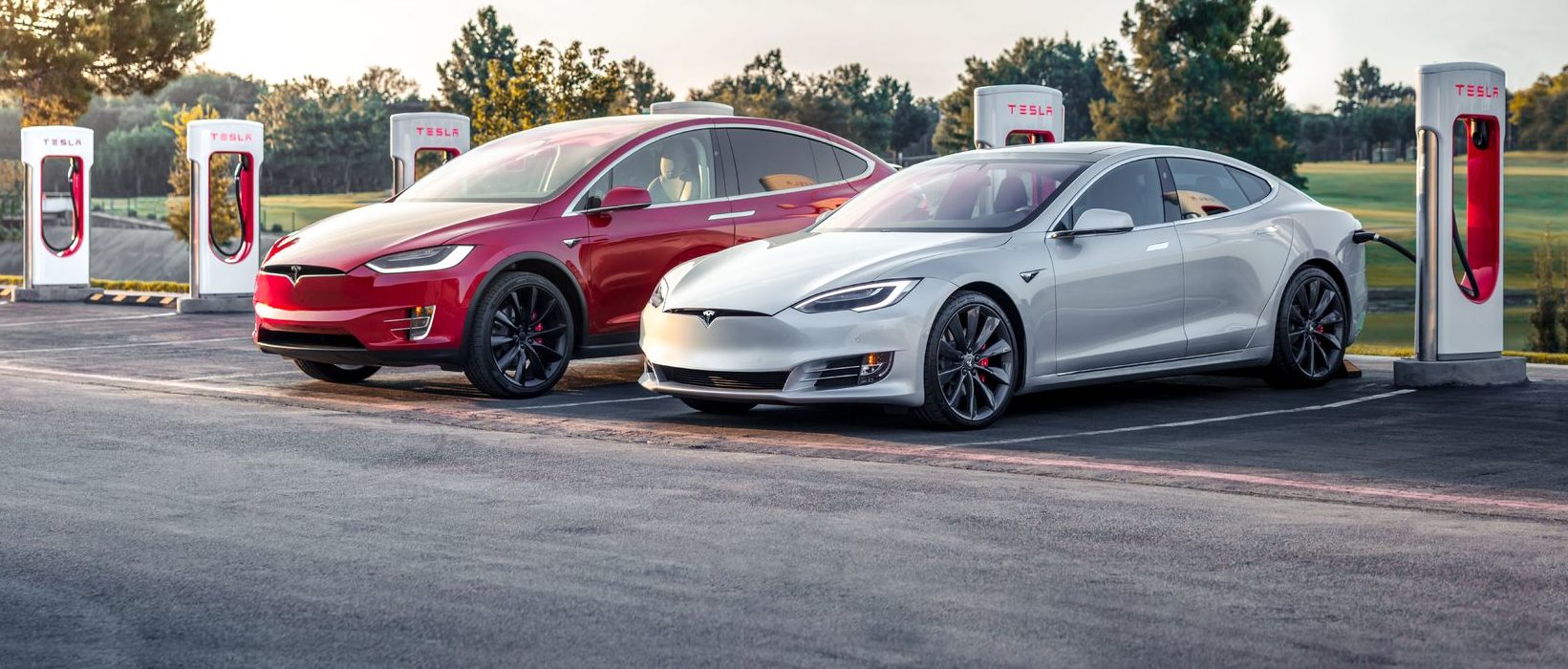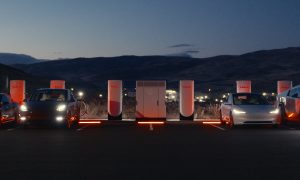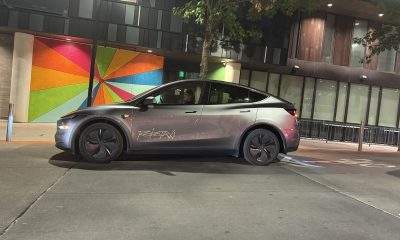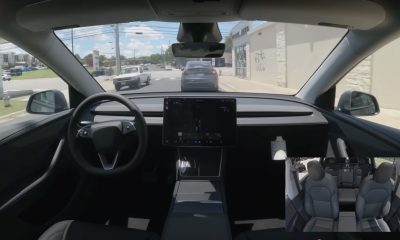

News
Tesla’s Q1 delivery results highlight the need for a Model S and Model X update
One of the most notable takeaways from Tesla’s Q1 2019 vehicle production and deliveries report was the steep decline in Model S and Model X sales. Over the course of the quarter, Tesla produced 14,150 Model S and X, a drastic drop from the 25,000 units that were manufactured last quarter. Deliveries of the flagship sedan and SUV also fell to 12,100 units. Under these circumstances, it appears that the time is now right for Tesla to start preparing for the release of an updated Model S and Model X.
A steep decline
Tesla did not provide a commentary behind the decline in Model S and X sales. This does not mean that the lower production and delivery figures of the vehicles were a complete surprise, as Tesla did shift a lot of its efforts in producing the Model S in favor of the Model 3 in Q1. The vehicles’ entry-level trim, the 75D variant, was also discontinued. Thus, the signs of a decline were already there. What was really surprising was the scope and gravity of the decline.
A possible explanation behind the Model S and Model X’s numbers in the first quarter may lie in the simple fact that the vehicles, particularly the full-size premium sedan, are getting long in the tooth. Tesla started producing the Model S in 2012, and the vehicle has pretty much stayed the same since then, save for a facelift when the Model X was released. Granted, improvements were rolled out to the Model S as soon as they were available, as noted by Elon Musk in a tweet, but design-wise, Tesla’s flagship sedan is still practically competing in the market with a nearly 7-year-old interior and exterior.

The Model 3’s immense success did not help the Model S’ case either. It should be noted that Tesla anti-sold the Model 3 after it was unveiled, with the company and Elon Musk asserting that the Model S was a superior vehicle. Now that the Model 3 is making a mark in several markets across the globe, it is becoming evident that the electric sedan is simply Tesla’s best bang-for-your-buck car. With Tesla’s latest hardware and batteries, the Model 3 is a solid choice. Other Model 3-specific features, such as Track Mode for the Performance variant, add to the vehicle’s attractiveness to car buyers.
The Model 3 is such a solid vehicle that it is starting to make the Model S a harder sell, at least in its present iteration. Granted, the Model S is larger, and it has more bells and whistles such as Smart Air Suspension and a second display, but these are luxuries that a significant number of car buyers will likely be willing to forego in exchange for savings associated with a Model 3 purchase. The Tesla Model Y appears set to do the same to the Model X as well, as the vehicle presents much of the premium SUV’s advantages in a smaller package, at a far more affordable price.
A better Model S and X in the Model 3 era
If Tesla wishes to rekindle the interest and justify the higher prices of its flagship sedan and SUV, it would be a good idea to introduce updated versions of the vehicles as soon as the company is able. These improvements can come in various forms, such as better range, significantly better performance, and a far more exquisite exterior and interior design. With these improvements in place, the Model S and X will not only have the advantage of larger cabin space and a handful of unique features over their more affordable stablemates. They will be vehicles that are truly, without a doubt, a class above the Model 3 (and the Model Y for that matter).

It’s not like Tesla does not seem to be preparing for a potential Model S and Model X update either. Last year, a patent application emerged depicting a Model S/X dashboard equipped with the Model 3’s clever and acclaimed HVAC system. Panasonic, Tesla’s battery partner, also announced last November that it is doubling down on its partnership with the electric car maker by bringing some of its Japan-based battery cell production activities to the United States.
In a statement to the Nikkei Asian Review, Panasonic stated that it will be bringing its operations that build the Model S and Model X’s 18650 cells over to a “US-based unit starting (next) April (2019).” Elon Musk noted during the Q4 earnings call that there are no plans to change the Model S and Model X’s batteries to 2170 cells. Perhaps improved 18650 cells are in order with Panasonic’s move to the US? One can hope.
At this point in Tesla’s history, it would probably be wise to temper expectations with regards to the Model S and Model X’s quarterly sales. Tesla is now at a point where it is pursuing the mass market, and the company is accomplishing this with the Model 3 (and later, the Model Y). The Model S and Model X will definitely still be the company’s flagships, but they will likely just see a sustained demand of perhaps 25,000 per quarter, and that’s completely fine. Both vehicles were brought to market to prove that electric cars can be better than their gasoline-powered counterparts. Both vehicles already accomplished their mission. The Model 3 and Model Y is proof of that.
Elon Musk
Tesla investors will be shocked by Jim Cramer’s latest assessment
Jim Cramer is now speaking positively about Tesla, especially in terms of its Robotaxi performance and its perception as a company.

Tesla investors will be shocked by analyst Jim Cramer’s latest assessment of the company.
When it comes to Tesla analysts, many of them are consistent. The bulls usually stay the bulls, and the bears usually stay the bears. The notable analysts on each side are Dan Ives and Adam Jonas for the bulls, and Gordon Johnson for the bears.
Jim Cramer is one analyst who does not necessarily fit this mold. Cramer, who hosts CNBC’s Mad Money, has switched his opinion on Tesla stock (NASDAQ: TSLA) many times.
He has been bullish, like he was when he said the stock was a “sleeping giant” two years ago, and he has been bearish, like he was when he said there was “nothing magnificent” about the company just a few months ago.
Now, he is back to being a bull.
Cramer’s comments were related to two key points: how NVIDIA CEO Jensen Huang describes Tesla after working closely with the Company through their transactions, and how it is not a car company, as well as the recent launch of the Robotaxi fleet.
Jensen Huang’s Tesla Narrative
Cramer says that the narrative on quarterly and annual deliveries is overblown, and those who continue to worry about Tesla’s performance on that metric are misled.
“It’s not a car company,” he said.
He went on to say that people like Huang speak highly of Tesla, and that should be enough to deter any true skepticism:
“I believe what Musk says cause Musk is working with Jensen and Jensen’s telling me what’s happening on the other side is pretty amazing.”
Tesla self-driving development gets huge compliment from NVIDIA CEO
Robotaxi Launch
Many media outlets are being extremely negative regarding the early rollout of Tesla’s Robotaxi platform in Austin, Texas.
There have been a handful of small issues, but nothing significant. Cramer says that humans make mistakes in vehicles too, yet, when Tesla’s test phase of the Robotaxi does it, it’s front page news and needs to be magnified.
He said:
“Look, I mean, drivers make mistakes all the time. Why should we hold Tesla to a standard where there can be no mistakes?”
It’s refreshing to hear Cramer speak logically about the Robotaxi fleet, as Tesla has taken every measure to ensure there are no mishaps. There are safety monitors in the passenger seat, and the area of travel is limited, confined to a small number of people.
Tesla is still improving and hopes to remove teleoperators and safety monitors slowly, as CEO Elon Musk said more freedom could be granted within one or two months.
News
Tesla launches ultra-fast V4 Superchargers in China for the first time
Tesla has V4 Superchargers rolling out in China for the first time.

Tesla already has nearly 12,000 Supercharger piles across mainland China. However, the company just initiated the rollout of the ultra-fast V4 Superchargers in China for the first time, bringing its quick-charging piles to the country for the first time since their launch last year.
The first batch of V4 Superchargers is now officially up and running in China, the company announced in a post on Chinese social media outlet Weibo today.
The company said in the post:
“The first batch of Tesla V4 Superchargers are online. Covering more service areas, high-speed charging is more convenient, and six-layer powerful protection such as rain and waterproof makes charging very safe. Simultaneously open to non-Tesla vehicles, and other brands of vehicles can also be charged. There are more than 70,000 Tesla Superchargers worldwide. The charging network layout covers 100% of the provincial capitals and municipalities in mainland China. More V4 Superchargers will be put into use across the country. Optimize the charging experience and improve energy replenishment efficiency. Tesla will accompany you to the mountains, rivers, lakes, and seas with pure electricity!”
The first V4 Superchargers Tesla installed in China are available in four cities across the country: Shanghai, Zhejiang, Gansu, and Chongqing.

Credit: Tesla China
Tesla has over 70,000 Superchargers worldwide. It is the most expansive and robust EV charging network in the world. It’s the main reason why so many companies have chosen to adopt Tesla’s charging connector in North America and Europe.
In China, some EVs can use Tesla Superchargers as well.
The V4 Supercharger is capable of charging vehicles at speeds of up to 325kW for vehicles in North America. This equates to over 1,000 miles per hour of charging.
Elon Musk
Elon Musk hints at when Tesla could reduce Safety Monitors from Robotaxi
Tesla could be reducing Safety Monitors from Robotaxi within ‘a month or two,’ CEO Elon Musk says.

Elon Musk hinted at when Tesla could begin reducing Safety Monitors from its Robotaxis. Safety Monitors are Tesla employees who sit in the front passenger seat during the driverless rides, and are there to ensure safety for occupants during the earliest rides.
Tesla launched its Robotaxi fleet in Austin last Sunday, and after eight days, videos and reviews from those who have ridden in the driverless vehicles have shown that the suite is safe, accurate, and well coordinated. However, there have been a few hiccups, but nothing that has put anyone’s safety in danger.
A vast majority — close to all of the rides — at least according to those who have ridden in the Robotaxi, have been performed without any real need for human intervention. We reported on what was the first intervention last week, as a Safety Monitor had to step in and stop the vehicle in a strange interaction with a UPS truck.
Watch the first true Tesla Robotaxi intervention by safety monitor
The Tesla and UPS delivery truck were going for the same street parking space, and the Tesla began to turn into it. The UPS driver parallel parked into the spot, which was much smaller than his truck. It seemed to be more of an instance of human error instead of the Robotaxi making the wrong move. This is something that the driverless cars will have to deal with because humans are aggressive and sometimes make moves they should not.
The Safety Monitors have not been too active in the vehicles. After all, we’ve only seen that single instance of an intervention. There was also an issue with the sun, when the Tesla braked abnormally due to the glare, but this was an instance where the car handled the scenario and proceeded normally.
With the Robotaxi fleet operating impressively, some are wondering when Tesla will begin scaling back both the Safety Monitors and Teleoperators that it is using to ensure safety with these early rides.
CEO Elon Musk answered the inquiry by stating, “As soon as we feel it is safe to do so. Probably within a month or two.”
As soon as we feel it is safe to do so.
Probably within a month or two. We continue to improve the Tesla AI with each mile driven.
— Elon Musk (@elonmusk) June 30, 2025
Musk’s response seems to confirm that there will be fewer Teleoperators and Safety Monitors in the coming months, but there will still be some within the fleet to ensure safety. Eventually, that number will get to zero.
Reaching a point where Tesla’s Robotaxi is driverless will be another significant milestone for the company and its path to fully autonomous ride-sharing.
Eventually, Tesla will roll out these capabilities to consumer-owned vehicles, offering them a path to generate revenue as their car operates autonomously and completes rides.
For now, Tesla is focusing on perfecting the area of Austin where it is currently offering driverless rides for just $4.20 to a small group of people.
-

 News5 days ago
News5 days agoTesla Robotaxi’s biggest challenge seems to be this one thing
-

 News2 weeks ago
News2 weeks agoTesla confirms massive hardware change for autonomy improvement
-

 Elon Musk2 weeks ago
Elon Musk2 weeks agoElon Musk slams Bloomberg’s shocking xAI cash burn claims
-

 News2 weeks ago
News2 weeks agoTesla China roars back with highest vehicle registrations this Q2 so far
-

 News2 weeks ago
News2 weeks agoTesla features used to flunk 16-year-old’s driver license test
-

 News2 weeks ago
News2 weeks agoTexas lawmakers urge Tesla to delay Austin robotaxi launch to September
-

 News2 weeks ago
News2 weeks agoTesla dominates Cars.com’s Made in America Index with clean sweep
-

 News2 weeks ago
News2 weeks agoTesla’s Grok integration will be more realistic with this cool feature


















